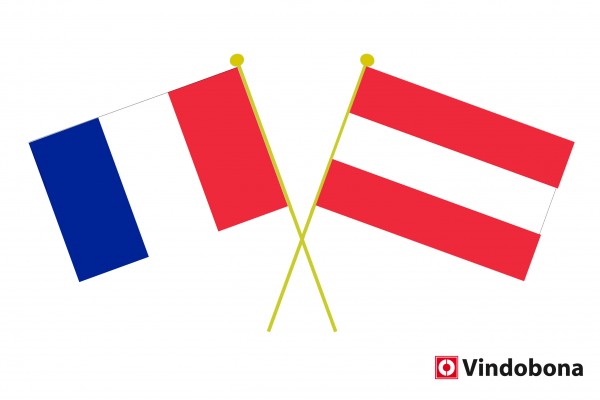Paris and Vienna Share Focus on Climate Protection
Paris and Vienna, two of the largest cities in Europe, now share a focus on protecting the environment. To see how Paris is working to deal with climate change and how Vienna can learn from it, a Viennese delegation visited Paris to view some projects aimed at countering climate change. Read more about the projects that Paris and Vienna are implementing to protect the cities from the harmful effects of the changing climate.
 Jürgen Czernohorszky, the Vienna City Councillor for Climate: "Because of environmental change, we have to think about how to transform our roofs into providers of energy, green areas for residents, or providers of food." / Picture: © French and Austrian crossed flags by Vindobona
Jürgen Czernohorszky, the Vienna City Councillor for Climate: "Because of environmental change, we have to think about how to transform our roofs into providers of energy, green areas for residents, or providers of food." / Picture: © French and Austrian crossed flags by Vindobona
Paris and Vienna, two of the largest cities in Europe, now share a focus on protecting the environment. As Vienna has set a goal of achieving a neutral CO2 balance by 2040, its government sent a fact-finding delegation to Paris to see how the French capital is dealing with some of the climate challenges that the cities have in common.
Their conversations with decision-makers and experts in Paris included how to fight climate change, encouraging citizen participation in greening projects, city farming, and other related themes.
On the trip, the Viennese delegation witnessed various intriguing projects aimed at countering climate change in Paris.
Projects to counter climate change
One of the projects the Viennese saw in Paris was the “Budget Participatif.” The concept of the “Budget Participatif” is that Paris residents can submit plans to counter climate change.
If the proposal is approved, those who proposed the idea are allowed to participate in its realization.
“Oasis” is one project that has already resulted from the “Budget Participatif.” This proposal is leading to 10 schoolyards being refitted to deal with environmental change.
Vienna is planning to implement a similar project in 2022 with a six million euro budget for the pilot phase. The three eligible districts in Vienna were those suffering most from increasing temperatures, relatively few green spaces, and socioeconomic inequalities.
The plan is to reach groups such as those in youth centers that are typically underrepresented in citizens initiatives. The decision on which project will be implemented will be decided by a citizens’ jury.
“Nature Urbaine” is one of the most ambitious projects being implemented in Paris. This is a city roof farming project that will measure 15,000 square meters when completed, which would make it the largest in Europe. The result of the project would be a daily harvest of 1 tonne. A supermarket, neighboring restaurants, and a small farmers’ market are already purchasing what is being produced by “Nature Urbaine.”
Vienna's roof farming project is much smaller than the one in Paris–a 234 square meter areal atop the former Sophien Hospital. However, Vienna boasts 5,700 hectares of agricultural land within city limits, and Paris has only one-seventh the amount of green space of Vienna.
Jürgen Czernohorszky, the Vienna City Councillor for Climate, Environment, and Democracy who led the Paris mission says Vienna can still learn from Paris. “Because of environmental change, we have to think about how to transform our roofs into providers of energy, green areas for residents, or providers of food.” Czernohorszky highlights municipal support programs for such projects, with more than 4 million euros approved in the first half of 2021 for greening programs and unsealing concrete covered areas.
The nature area around out-of-service railroad tracks in Paris’s quarter Batignolles is similar to an area being created on the grounds of Vienna’s abandoned Northern Railway Station (Nordbahnhofgelände). Upon completion in 2025, the Vienna space will comprise 93,000 square meters of nature and park areas.
Photovoltaics
In addition to projects benefitting individual districts, the City of Vienna is planning a huge investment in photovoltaics that will quadruple solar power production by 2025. This project would result in 250 megawatts peak.
Additionally, 10 percent, or 800 megawatts peak, is scheduled to come from solar energy by 2030 through the utilization of unused municipal space as well as the roofs of various private facilities like supermarkets and parking garage roofs.



